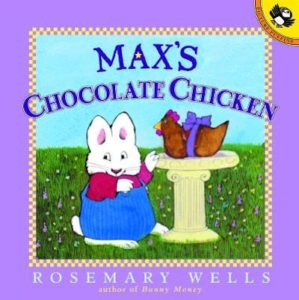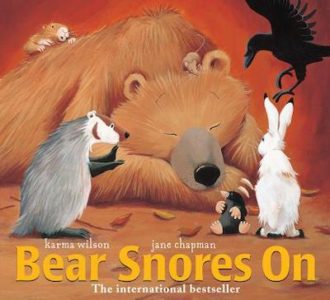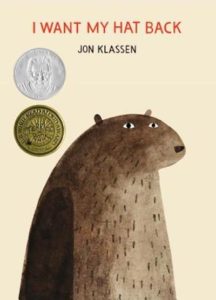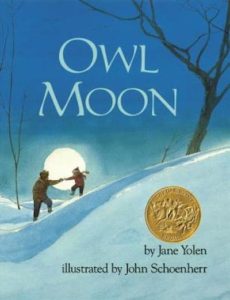January is about beginnings—new resolutions, new ideas, and hopefully, new first drafts. While thinking about beginnings, I thought about one of my first writing classes, high school journalism. I don’t remember much from the class except that a good lead should always include the answers to four important questions: the 4 Ws. These are; who, what, where, and when. After a good lead, we were taught the story could move on into the meaty details of how, or why.
Good leads are something that the news reader doesn’t really notice but are crucial to keeping the reader’s attention. They quickly dispense with niggly concerns (but important facts) so the reader can settle into the story. It is a technique every picture book writer ought to know.
Answering the Four Questions
Answering those four questions right up front in any story tucks the reader in. However, as with many aspects of writing the picture book, the writer for the very young has to do it faster than writers for adult readers, with fewer words, and sometimes in verse! It’s the old Ginger Rogers revelation: Yes. Fred Astaire was a fantastic dancer. But Ginger Rogers had to do everything in reverse and on high heels! (Just saying …)
Better than hearing this from me—and more fun—is studying how some of our best picture book writers, and illustrators, do it. Below are some of my favorite, classic picture book examples, in prose and in verse.
 (Prose) Rosemary Wells, from Max’s Chocolate Chicken
(Prose) Rosemary Wells, from Max’s Chocolate Chicken
“One morning somebody put a chocolate chicken in the birdbath.”
Let’s parse this opening line. When: one morning. Who: somebody. (We also see a picture of that somebody—Poppa?) What: put a chocolate chicken. Where: in the birdbath. (And what a great hook for a young child! Why would someone do that?)
(Metered verse) Karma Wilson, from Bear Snores On
“In a cave in the woods
in his deep, dark lair,
through the long, cold winter
sleeps a great brown bear.”
Where: in a cave in the woods in a deep dark lair. When: through the long cold winter. What: sleeps. Who: a great brown bear. (And she did all this with perfect meter!)
Of course, we are blessed by the illustrations in our picture books. In addition to everything else they do so well, the art carries a great deal of this initial informational load. If the setting is a farm, we see that, and it may not be mentioned at all in the text. If it is nighttime, or winter, or the main character is a bear … these may, also, not be directly mentioned.
If it is not said in the text, it is then incumbent on the illustrator to add that context. Look at Jane Yolen’s Caldecott-winning book, illustrated by John Schoenherr.
(Free verse) Jane Yolen, from Owl Moon
“It was late one winter night,
long past my bedtime,
when Pa and I went owling.”
When: late one winter night, long past my bedtime. Who: Pa and I. What: went owling. There is no mention of where . . . that is covered by the beautiful farm scene in the illustration.
Occasionally, leaving out more than one of these details may actually enhance the story by focusing the reader’s attention on another detail that may be of more importance.
 For example, study Jon Klassen’s book I Want My Hat Back. There is no where indicated (except for a few rocks and sprigs of grass). Nor even a when. Who and what are of prime importance. (Who: I. What: Want my hat back.) Against almost completely blank pages readers really notice the eyes of the bear and the rabbit. The facial expressions are subtle, yet so important for understanding the story. In an intensely illustrated background, the significance of those looks might get lost. We assume it is some place where there are bears and rabbits and other animals. And the when is unimportant. As in all things, once you know the rules you also know when it may be best to break them.
For example, study Jon Klassen’s book I Want My Hat Back. There is no where indicated (except for a few rocks and sprigs of grass). Nor even a when. Who and what are of prime importance. (Who: I. What: Want my hat back.) Against almost completely blank pages readers really notice the eyes of the bear and the rabbit. The facial expressions are subtle, yet so important for understanding the story. In an intensely illustrated background, the significance of those looks might get lost. We assume it is some place where there are bears and rabbits and other animals. And the when is unimportant. As in all things, once you know the rules you also know when it may be best to break them.
(Prose) Jon Klassen. From I Want My Hat Back
My hat is gone.
I want it back.
So study first lines for how good writers quickly dispense with the basic questions any reader has about the world of the story. Then once you’ve tucked your readers in, you can lead them on to discover the answers to those other two important questions: how the story unfolds and why.

